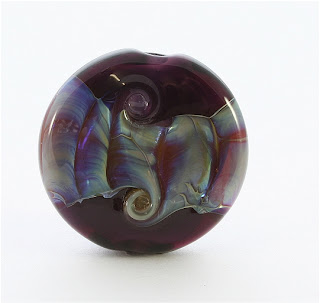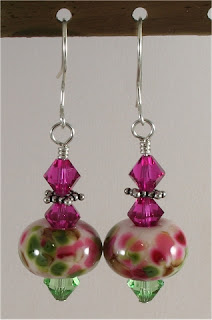Wednesday, November 28, 2012
Sunday, November 11, 2012
Tuesday, November 6, 2012
Sunday, November 4, 2012
Saturday, October 27, 2012
Thursday, October 25, 2012
Tuesday, October 23, 2012
Of course the most important thing in lampworking after the torch is probably the glass. Glass comes in the form of rods which is basically a "stick" of glass (like a pencil or a straw)about 30cm long & anywhere from a couple of millimetres up to about 15mm thick. I use what is called "soft glass" or "soda lime glass" as compared to things like pyrex which is borosilicate & very hard to melt. Soft or soda lime glass contains soda, lime & other elements as well as silica & is used for many things like windows & bottles & of course making beads.
Here is my collection of glass (although I have to admit, it has grown even further since this pic was taken), glass ranges in price from $10 to $100+ per pound depending on what sort of glass it is & whether it has inclusions like silver or gold in it. I have my glass sorted by manufacturer, my silver glass (the most expensive glass) is in the top section (round holes) of the first pic.
Monday, October 22, 2012
Taking a closer look at the things in the studio, firstly, here is a picture of my torch, both lit & unlit. I use a small torch from GTT (Glass Torch Technologies) called a Cricket, as you can see, its a pretty pink/purple colour.
Friday, October 19, 2012
Earlier this week I was very excited to be mentioned on a very well known beading blog called Art Bead Scene. They featured a collection of beads from various Australian lampworkers & one of my beads was amongst them. Art Bead Scene is a collaborative blog effort between a number of very talented artists & has a huge following in the art bead & blogging world.
If you haven't checked out Art Bead Scene yet their blog is full of colour, creativity giveaways & challenges, you can go & check it out at
http://artbeadscene.blogspot.com.au/2012/10/beads-of-oz.html
Thursday, October 18, 2012
Monday, October 15, 2012
Saturday, October 13, 2012









































